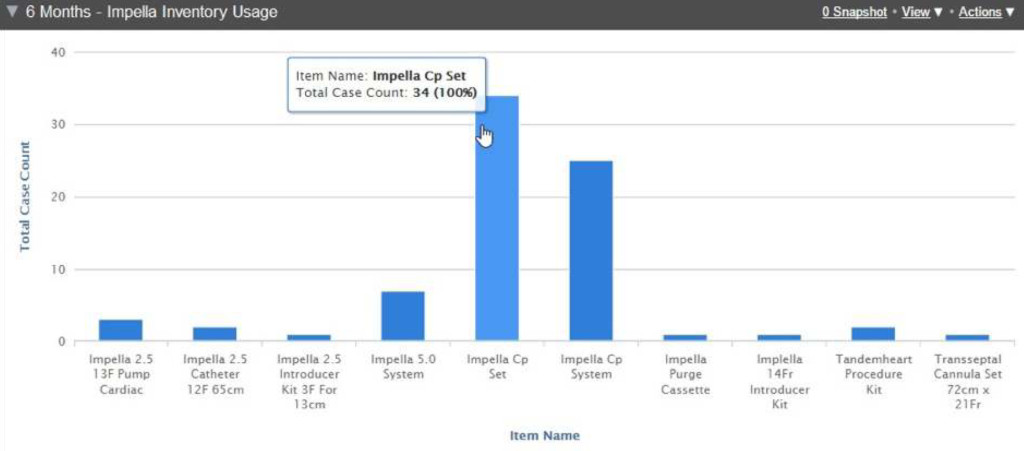A healthcare organization can spend a tremendous amount of time and resources reducing costs associated with inventory management. For example, departments may implement initiatives to understand where and how inventory is used. They look for opportunities to reduce the surplus of high-cost items and maximize efficient use of existing inventory. Many of these initiatives are run with only a partial view (e.g., spreadsheets), and so, there is limited visibility into efficient inventory management and their influence over profitable procedures.
An inventory management system (IMS) is one such solution for gaining deeper insights into the impact of inventory consumption. For example, to help determine the profitability of procedures, the cost of used inventory can be compared with their billed costs. Data is aggregated from both the IMS and clinical systems with a bi-directional connection, but this two-way connection can be a rare occurrence. In those cases, a department is left with no other option but to estimate the profitability of procedures.
Inventory Management on a Whole New Level
A business operations platform helps maximize the efficiency of inventory management by integrating multiple systems in real-time and providing actionable insights. Inventory staff can count existing & expiring inventory, actively monitor use of individual supplies, and review costs associated with each case. They can also correlate frequency of inventory usage with case type, physician, and other clinical parameters. Finally, by closely monitoring the profitability of procedures, management can make important inventory selection decisions that can reduce the cost of care paid by the patient.


Taking it a step further, a business operations platform provides actionable insights about inventory and supplies in real-time with comparisons to historical trends. It can drive daily, weekly, monthly email notifications to keep track of expiring inventory, and it can correlate device alerts & inventory recalls with cases in which they were utilized.
To better plan for future needs, management and staff can utilize its reporting capabilities to get in-depth insights about:
- Profitability of individual procedures based on costs of inventory vs. billed costs
- Inventory waste and added costs due to unplanned procedures
- Inventory usage by case type, manufacturer, and supply name
- Total cost breakdown by inventory type, or specific supply name
- Inventory used historically vs. inventory ordered
Informed Decisions Can Lead to Increased Profitability
Improving the profitability of procedures requires an understanding of inventory consumption at the individual procedure and aggregate levels. Decisions about inventory management are best informed with actionable insights, many of which can be delivered through a business operations platform. With its integrated analytics, clinical information can be correlated with inventory usage. Management and staff get a complete picture of operational efficiency and are empowered to make clinical, operational, and financial improvements.
HealthLevel is the creator of Foundations™, a radiology business operations platform. By combining financial, clinical, and operational data, it uses analytics to paint a complete picture of a business’s operations. It engages every team member to confidently take actions that improve productivity and increase the bottom line. Learn more.
Want to Learn More? Contact Us.



Recent Comments